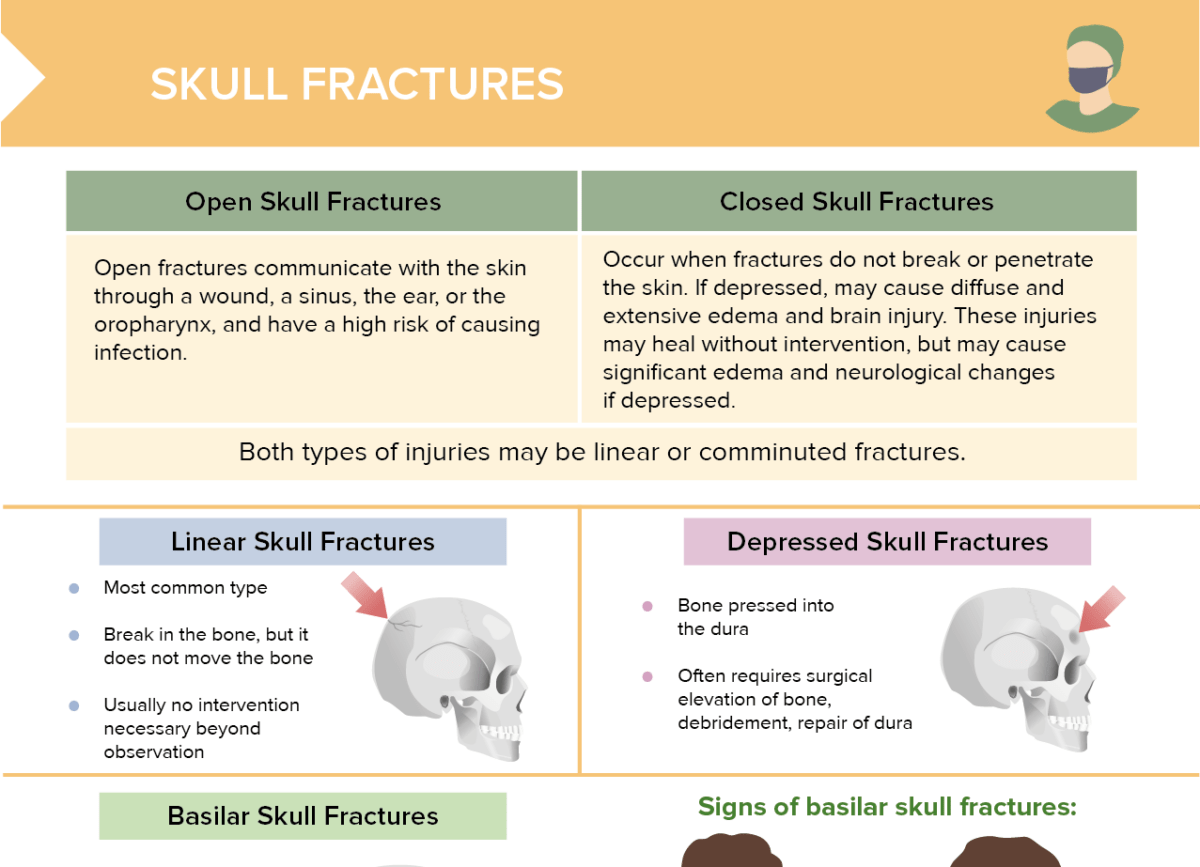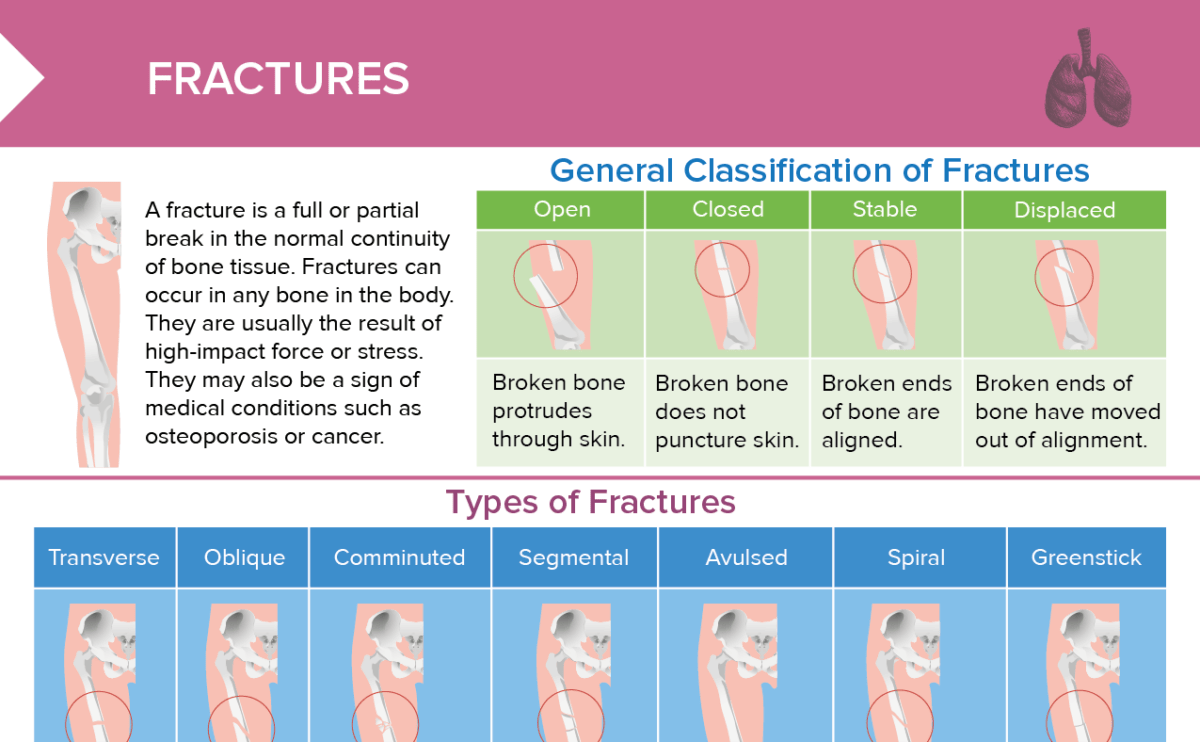What is a fracture?
A fracture is a full or partial break in the normal continuity of bone tissue. Fractures can occur in any bone in the body. They are usually the result of high-impact force or stress. They may also be a sign of medical conditions such as osteoporosis or cancer.
General classification of fractures
Fractures can be classified as follows:
- Open fracture: broken bone protruding through skin
- Closed fracture: broken bone not puncturing skin
- Stable fracture: broken ends of bone aligned
- Displaced fracture: broken ends of bones moved out of alignment
Different types of fractures
- Transverse fracture: break runs in a straight line across bone
- Oblique fracture: break runs diagonally across bone
- Comminuted fracture: bone broken into 3 or more pieces, fragments present at fracture site
- Segmental fracture: one bone fracturing in 2 places, with “floating” segment of bone
- Avulsed fracture: broken piece attached to a tendon or ligament separating from rest of the bone
- Spiral fracture: break spirals around bone (commonly caused by a twisting injury)
- Greenstick fracture: one side of bone broken, other side bent (only seen in children)
What are the 3 types of compression fractures?
Compression fractures generally occur in the spine and are usually the result of bone loss or injury. The three common types are:
- Wedge fracture: front of vertebra collapsing with back remaining intact
- Crush fracture: entire vertebra collapsing
- Burst fracture: vertebra breaking in multiple directions
How to tell if a fracture is healing
Monitoring a fracture for signs of healing involves both clinical assessment and diagnostic imaging:
- Pain decreasing
- Increasing tolerance for movement/improved function
- Stable or hardening lump around the fracture site (new bone forming)
- Imaging showing decreasing size of fracture gap
- Absence of localized heat or redness (would indicate infection or complications)
Fracture healing process
- 0–2 weeks: hematoma formation
- 2–3 weeks: fibrocartilaginous callus formation
- 3–6 weeks: bony callus formation
- 6 weeks–2 years: bone remodeling
Which factor inhibits fracture healing?
Factors that can inhibit fracture healing include:
- Poor circulation at fracture site
- Infections
- Smoking
- Malnutrition
- Older age
- Some medications like corticosteroids
- Movement
Types of wrist fractures
The most common types of wrist fractures are:
- Colles fracture: break in the radius bone near the wrist, with the broken fragment tilting upward
- Smith fracture: similar to Colles, but the broken fragment tilts downward
- Scaphoid fracture: break in the scaphoid bone
- Barton fracture: fracture and dislocation of the posterior part of the distal radius
Types of finger fractures
The most common types of finger fractures are:
- Phalanx fractures: fractures in the finger bones, usually from direct trauma
- Mallet finger: injury to the extensor tendon causing the finger tip to droop
Types of hip fractures
The most common types of hip fractures are:
- Femoral neck fracture: fracture in the neck of the femur, often in older adults
- Intertrochanteric fracture: fracture between the greater and lesser trochanters of the femur
Types of foot fractures
The most common types of foot fractures are:
- Metatarsal fractures: breaks in the long bones of the foot, common in sports
- Calcaneal fracture: break in the heel bone, usually from a fall

